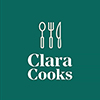The Beauty of Pickling
What a better way to preserve food than pickling, especially at this time of year. I love anything pickled in the summer. It is so nice and can go with so many different foods!
Pickling is a very old method of food preservation. Before food could be refrigerated, many ways were used to extend the shelf life of food products, with the aim of minimising food spoilage and food waste.
Pickling involves preserving and extending the shelf life of many foods, such as vegetables, meat, fish, eggs, fruit and even nuts. Some of the more popular choices that you will see in the shelves of supermarkets are cucumbers and beetroot, using either anaerobic fermentation in brine or by immersing food in vinegar. The brine/vinegar solution kills off any microorganisms or bacteria that may be present in the food and allows the food product’s shelf life to be extended. When using vinegar to pickle foods, the low pH and acidic nature of the vinegar prevents the majority of microorganisms from thriving, preventing spoilage.
When using a salt brine solution, controlled fermentation is encouraged. This is done when making sauerkraut. During this process, beneficial bacteria can grow, and the growth of bad bacteria that causes food spoilage is prevented. By pickling, there is a change in the texture, taste, and flavour of the food being pickled due to the chemical reactions that take place within the food when pickling. The food is completely transformed.
There are numerous advantages to pickling, and some of the benefits are as follows.
- It extends the shelf life of food products and allows foods that typically would have had to be eaten/cooked soon after being picked/purchased, to last for longer periods of time. By extending the shelf life, it also helps to reduce the problem of food waste.
- There are also numerous health benefits associated with pickled products. For example, it can help to fight diseases. Typical food that is pickled is cucumbers, and cucumbers are high in the antioxidant beta-carotene. Beta-carotene can be converted by the body to vitamin A which can help to lower your risk of various diseases such as heart disease, stroke, and cancer.
- Pickles are also commonly referred to as a source of probiotics. Probiotics when combined with prebiotics can help your body to create a healthy environment for gut microbes to flourish, aiding overall gut health.
Pickling is an easy way of preserving food that does not require a lot of time or effort. It is a simple process that follows the following basic steps.
ENSURE ALL EQUIPMENT IS CLEAN AND STERALISED
Wash jars and lids in hot, soapy water, rinse, then place on a baking tray and put in a low oven for 10 mins or until completely dry. If you want to use rubber seals, remove the seals and cover them in just-boiled water. Make sure you sterilise any funnels, ladles or spoons you’re going to be using too. All equipment must be sparklingly clean before you begin, to eliminate bacteria or yeasts from the equation.
CHOOSE THE RIGHT VINEGAR
For pickles to last in the jar, the vinegar must be 6% acidity. White wine and malt vinegar are 6%, but cider vinegar has slightly lower acidity, so is more suitable for chutneys.
CHOOSE THE RIGHT SALT
Do not use table salt for pickling, as the anti-caking agents can give a cloudy, discoloured result. Look for either coarse crystal or coarse grain salt.
COVER THE VEG
Allow a few centimetres of space at the top of the jar and make sure the vegetables are well-covered in vinegar. A pestle or the end of a rolling pin is ideal for pushing the veg down into the vinegar.
STORING THE PICKLES
When salted or brined and pickled, and kept in a cool, dark place, these pickles should last, unopened, for several months. Softer vegetables, such as beans and cucumbers, are most likely to go soggy sooner, as they are the most watery.
I have created some gorgeous new recipes all involving pickling that you can access and try out.
Links below to them…
I adore these recipes and they are so easy to make. Give them a try and let me know how you go. They are really tasty and you will be thrilled you’ve given it a try.



